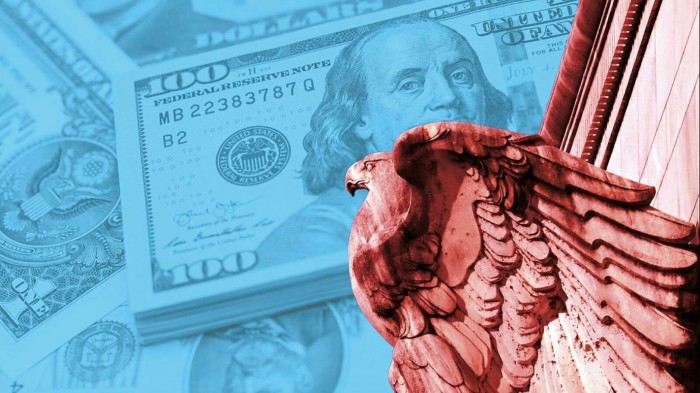The valuation reset rippling through markets

Roula Khalaf, Editor of the FT, selects her favourite stories in this weekly newsletter.
The writer is head of asset allocation research at Goldman Sachs
At the beginning of 2022, investors faced a very unfavourable starting point for investing — both equities and bonds were expensive, with valuations close to the highest levels in more than 100 years.
At the same time, already elevated inflation accelerated further, forcing central banks to tighten policy aggressively. This triggered a sharp increase in US yields, which weighed on most assets except the dollar and drove a material valuation reset. Equity valuation multiples fell alongside the rising bond yields.
As we enter 2023 investors are facing a different set-up: notably, inflation has peaked and is falling. Historically, this has provided some relief across assets, provided growth remained favourable and a recession was avoided. Equities have also seen a turnround in the Covid-19 crisis recovery, particularly in their relative performance against bonds.
This is reflected in low risk premia across cyclical assets such as equities and lower quality, high-yield credit. Such premia represent the extra returns that current market prices suggest investors are seeking from assets such as equities over government bonds. If low, the potential for relative gains for such assets might be less.
One measure of the premia is the stock market’s earnings yield — a benchmark derived from dividing expected earnings of companies by the price of shares. It is the inverse of the price-earnings valuation multiple. The cyclically adjusted earnings yield of US stocks is now below US 10-year Treasury yields and the gap between the two is the lowest since 2007.
That investors are accepting a lower yield from stocks than bonds suggests they expect better economic and earnings growth to boost returns. This was in particular during the 1990s when investors were bullish and equity/bond yield gaps declined to their all-time lows before eventually picking up sharply during the bursting of the dotcom bubble in 2001.
The re-rating of equities against bonds seems at odds with the overall bearish investor sentiment last year. The strength of the US economy alongside the persistence of inflation can help explain this. In fact, with elevated inflation, equities have been less risky than bonds — it was the worst year for bond performance in more than a century and rates volatility sharply increased compared with equities.
The risk premium reset has continued this year with strong performance of risky assets owing to better news on the global growth/inflation mix. First, the US labour market has stayed remarkably resilient, but falling wage inflation is easing pressure on the Federal Reserve to tighten aggressively from here. Second, risks of a European energy crisis are fading with a milder winter and declining gas prices. Third, China is reopening faster than anticipated, supporting global growth and easing inflationary pressures from supply bottlenecks.
But the re-rating of equities versus bonds increases the risk of disappointment for investors in stocks. New bull markets with equities outperforming bonds seldom start without significant room for the economy to expand, either because of a recovery from a recession or due to a new growth engine.
The US is likely to expand below trend this year and while growth risks in Europe and China have eased, long-term concerns remain. And we expect relatively low corporate earnings growth in the next two years with profit margins likely to decline. In addition, there are risks from negative shocks such as a US debt ceiling crisis or more geopolitical tensions.
In contrast, with falling inflation and central banks approaching the end of their tightening cycles, rates volatility is likely to come down. This points to better risk-adjusted returns in quality fixed income.
But bonds are not without risks. If US wage inflation eases less than expected from here and growth remains resilient, there could be more hawkish Fed surprises. While the mild winter has provided relief on energy supply concerns, risks of stronger commodity prices owing to increased demand as China reopens or a colder winter in Europe remain.
Plus, although EU inflation has started to surprise on the downside, the European Central Bank delivered a hawkish policy message in December. And any change by Japan to current policies to control yields could also drive more rates volatility in 2023.
Both for equities and bonds, the competition from cash or money market funds remains strong in 2023 with prospective yields nearing 5 per cent in the US (well above the 10-year Treasury yield at 3.5 per cent) and little risk from either growth or rates.
.
Comments